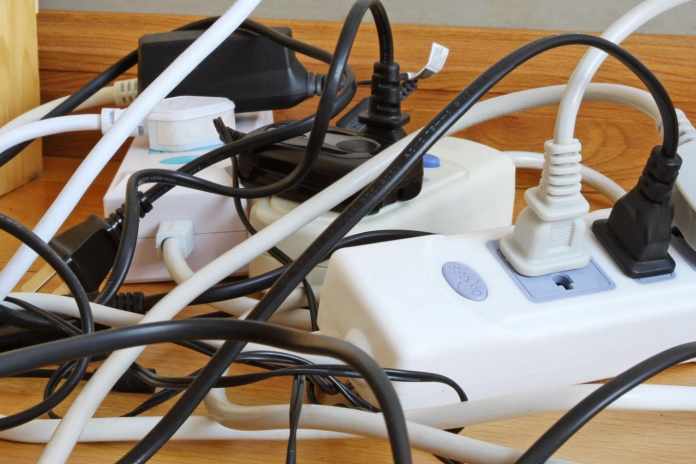If your house is relatively old, you might only have a few power outlets per room. The problem this creates for us with our technology-filled lifestyles is that all our devices and appliances can contribute to overloading our power outlets at home. Our homes are only becoming more and more filled with appliances, and if your house isn’t checked or updated to suit this, you could start seeing some electrical problems over time. This blog is going to outline 5 steps to help you avoid this problem, ensuring that you can operate your appliances without the worry of overloading the outlet.
Table of Contents
1. Don’t Plug Too Many Appliances in At Once
This is something that we’re all guilty of doing at some point but having too many appliances and devices plugged into one outlet can lead to you overloading the circuit. Piggybacking off number of power boards is not usually advisable as this will result in you exceeding your outlet’s amperage. Make sure that you turn off and unplug all of the appliances that you aren’t using so that you aren’t putting any extra strain on your single outlet. Having a couple of things going at once is fine, but if you’re plugging all of your kitchen’s appliances into one outlet, you’re asking for trouble.
2. Check on High Amp Devices
There are many devices around our homes that are particularly power-hungry, such as blenders or coffee machines in our kitchens. Check to see where these are plugged into, as you don’t want to keep plugging in these high amp devices into the same power outlets at home, as that can lead to an overload. The more major appliances such as refrigerators or air conditioning units should be plugged into their own power outlets at home. If you aren’t sure on how much power each device needs, or if your current setup is ok, you might want to get in contact with an electrician in Perth to conduct a thorough home inspection.
3. Consider Energy-Efficient Devices
The great thing about recent technological advances is that there are now more energy-efficient devices to use that can help to reduce your energy consumption and monthly energy bills. Several older appliances can tend to be very power-hungry, so it’s worth looking around your home to see if you can make the upgrade to energy-saving devices.
4. Replacing Old Lighting
The lighting in our homes can be a significant part of our energy consumption and is definitely something to look at replacing if you are still on old incandescent or halogen bulbs. Replacing these bulbs with the energy efficiency of LED light bulbs will allow you to light the same space for less energy. They also have longer lifetimes, meaning you won’t have to worry about replacing the bulbs as often as you currently do.
5. Hire an Electrician
As we’ve discussed, sometimes old houses aren’t up to the test to match the energy demands of your household. It’s recommended that you hire an residential electrician Perth to check on the electrical outlets in your home and whether or not you may need to make some upgrades. You might need to consider a rewire if your home is quite old, or the electrician may advise you to install some new power outlets at home to take the strain off your existing ones. Either way, you always need to consult with a licensed professional when dealing with electricity in your home.
















